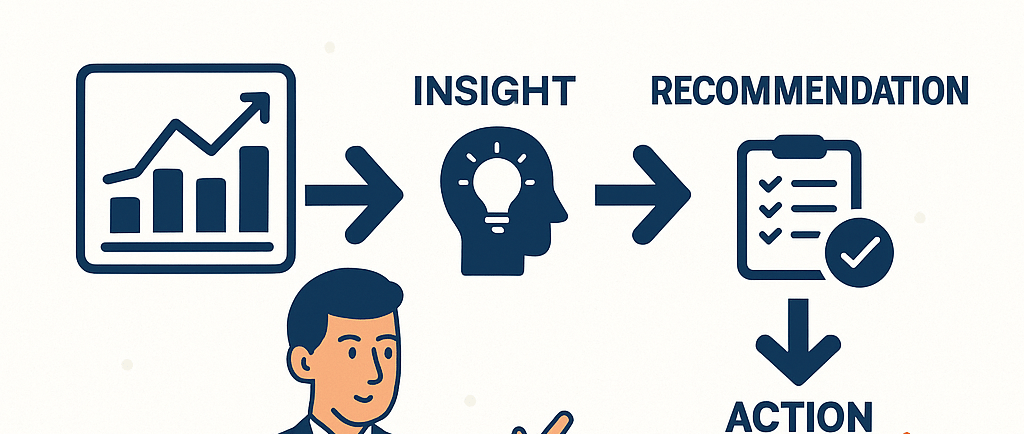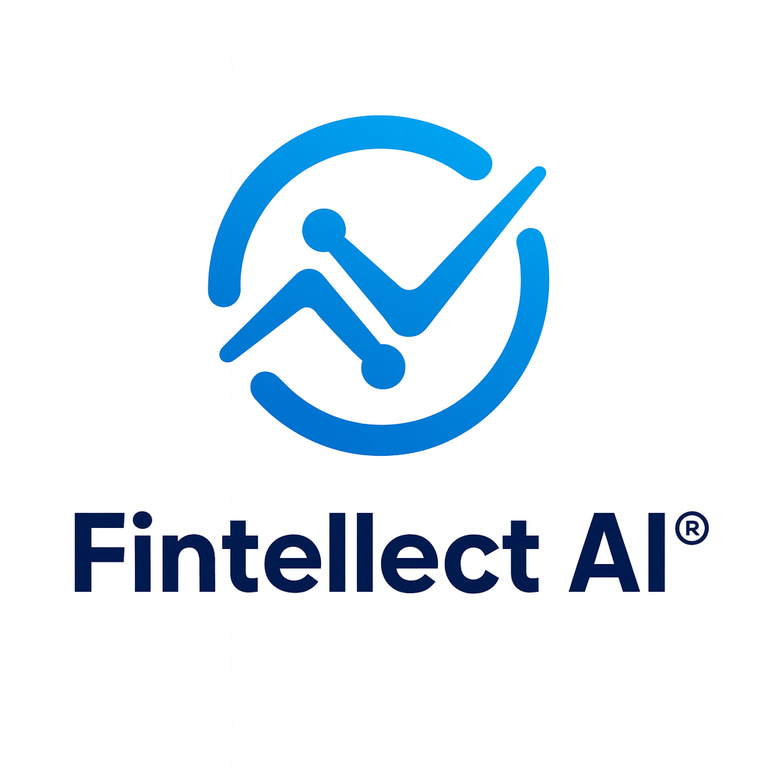AI in Finance: From Awareness to Mastery- Decision Intelligence in Finance — Turning AI Outputs into Strategic Actions
How AI insights evolve into measurable business outcomes — when finance teams know how to act on them.
CFO INSIGHTS
Zhivka Nedyalkova
5/7/20254 min read


How AI insights evolve into measurable business outcomes — when finance teams know how to act on them.
From Insight to Impact
By now, finance professionals have heard the pitch: AI brings speed, precision, and foresight. But what happens after the insight is delivered? That’s where many teams struggle. Raw predictions are not strategies. Dashboards are not decisions. For AI to create true value in finance, it must do more than inform — it must empower action. That’s the role of Decision Intelligence (DI).
DI operates at the intersection of data science, behavioral economics, and operational planning. It transforms AI-generated outputs into contextualized, traceable decisions — supported by humans and systems alike. In this article, we explore how finance teams can integrate DI into their daily workflows and leadership agendas.
1. What Is Decision Intelligence — and Why It’s the Missing Link
AI models can tell you that your cash flow is likely to decrease next quarter. But what should you do about it?
Decision Intelligence fills the gap between prediction and action. It structures decision-making processes using inputs from AI, context from the business environment, and guidance from finance professionals. It enables:
Simulated scenarios with measurable outcomes
Visual pathways from data → insight → recommendation → action
Integration of human oversight and ethical criteria
Why it matters: Finance teams need to move from passively receiving insights to actively shaping decisions. DI provides the framework.
2. Case Example: Forecasting Is Only the First Step
Let’s say an AI model flags a likely liquidity gap in 60 days. That’s useful — but incomplete. The CFO now needs to answer:
Which accounts are at risk?
What mitigation options exist?
What are the trade-offs of each?
DI in Action:
A decision intelligence system might simulate three funding strategies:
Accelerate receivables through early payment discounts.
Delay supplier payments.
Secure short-term credit.
Each option includes projected cash flow impacts, cost implications, and risks — with scenario simulations mapped against business priorities.
Key takeaway: Forecasting without contextual decisions is like GPS without a steering wheel. AI flags the route; DI helps you drive.
3. Why Human-in-the-Loop Is Still a Strategic Advantage
There’s a reason regulators, analysts, and auditors insist on human review: AI can inform, but only people can own decisions.
Human-in-the-loop (HITL) is not a bottleneck — it’s a strategic checkpoint. In DI systems, it ensures:
Ethical review of high-stakes decisions
Business logic overrides when needed
Accountability and audit trails
Example: An AI model suggests cutting 15% of marketing spend to meet EBITDA goals. The finance manager reviews it and adjusts the model’s assumptions based on new campaign data. The system updates its scenario. The result: a flexible strategy with leadership alignment.
Why it matters: Automation alone doesn’t equal intelligence. Intelligent decisions happen when humans validate, adjust, and act on AI outputs.
4. Tools That Enable Decision Intelligence Workflows
The leap from AI to DI requires the right tooling. Here’s what leading finance teams use:
Explainable Dashboards
Not just charts, but why metrics changed. XAI (Explainable AI) helps contextualize recommendations:
“Forecast revised due to unexpected drop in Q3 customer retention.”Scenario Simulators
Interactive tools to test “what if” scenarios and visualize their impact on KPIs, balance sheets, and risk profiles.Decision Paths
Some systems map every decision step: data input → model output → action taken → results → feedback to model.Feedback Loops
Integrated workflows allow decision outcomes to feed back into AI models for continuous learning.
Tip: Tools are only as good as their adoption. Finance teams need training not just on how to use them, but why they matter.
5. Practical Scenarios Where DI Changes the Game
Let’s move from theory to practice. Here are real-world examples where Decision Intelligence (DI) reshaped financial decision-making:
🔹 Revenue Forecast Drop
Traditional workflow: Reviewed in weekly ops meetings with manual adjustments.
DI-enabled workflow: AI detects the drop, triggers scenario modeling, and presents actionable options to the CFO.
🔹 Budget Reallocation
Traditional workflow: Based on department requests, often subjective or politically influenced.
DI-enabled workflow: AI recommends reallocations using performance data and risk exposure metrics.
🔹 Loan Default Risk
Traditional workflow: Relies on static scoring models that lack nuance.
DI-enabled workflow: ML model detects early warning signs and proposes adjusted payment plans based on behavioral data.
🔹 Market Expansion
Traditional workflow: ROI is calculated manually with limited scenario analysis.
DI-enabled workflow: Multiple markets are simulated using AI-driven projections and risk benchmarks.
🔹 Audit Request
Traditional workflow: Teams scramble to justify past decisions with incomplete records.
DI-enabled workflow: Decision paths and XAI (Explainable AI) outputs are instantly generated and shared for transparent audit review.
Insight: DI isn’t about making AI smarter — it’s about making finance teams faster, more transparent, and better prepared.
6. Don’t Automate What You Don’t Understand
One of the biggest risks in AI-driven decision-making is automating complexity without clarity. Just because a model can automate doesn’t mean it should — especially in finance, where trust and traceability are paramount.
What to watch for:
Overreliance on opaque models without auditability
Automating decisions without stakeholder alignment
Blind trust in high-confidence predictions without exploring assumptions
What to do instead:
Demand XAI support for all major decisions
Involve multidisciplinary teams in scenario reviews
Document every decision path (for regulators, for teams, for learning)
Example: A credit scoring model shows 92% confidence in rejecting a loan. DI systems trace the variables behind that score — and if human oversight reveals a missing contextual factor (e.g., a client’s recent merger), the decision is paused or reversed.
7. Metrics That Reflect Decision Quality
Not all KPIs are financial. In DI, we measure:
Decision latency: How long between insight and action?
Decision traceability: Can we explain how and why we acted?
Feedback loops activated: Is the AI model learning from decisions taken?
Decision outcome accuracy: Did we meet expected results?
Finance teams that build these metrics into dashboards don’t just automate. They strategize with confidence.
Action Is the New Intelligence
The most sophisticated AI model in the world is useless if no one acts on it — or if it can’t explain its rationale. Decision Intelligence is how finance moves from insight to impact. It integrates technology, context, and human judgment into one unified flow.
As AI becomes more embedded in planning and control, decision intelligence will become the new CFO toolkit. Not just smarter machines — but smarter decisions, made transparently, collaboratively, and with confidence.
It is through the synergy of algorithmic insights and human reasoning that DI truly emerges — not as a replacement for judgment, but as a framework that sharpens and supports it.
